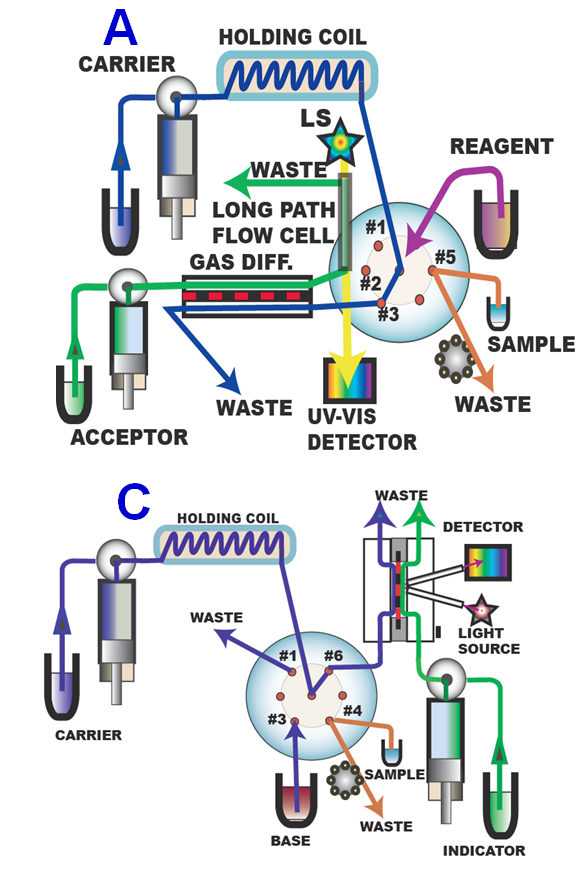Combination of a microSI-LOV system with a gas diffusion unit and a second syringe pump can be constructed in two ways by using:
- miniaturized gas diffusion unit and a flow cell (A, B)
- gas diffusion sensor (C, D)
In both configurations a second syringe pump is used to propel the acceptor stream, for reasons discussed previously. The advantage of the first approach is that it allows the use of long light path flow cell to achieve higher sensitivity. The advantage of the second approach is that it allows monitoring of the gas diffusion process in real time.
The choice of configuration also depend on the chemical reactions used for quatification of the target analyte which may be ammonia, carbon dioxide, carbonates, total alkalinity, sulfur dioxide, hydrogen sulfide, chlorine, hydrogen cyanide, ozone, acetic acid, ethanol, phenol, volatiles….and many other compounds. Since the use of gas diffusion unit is well known the gas sensor configuration is discussed here using carbon dioxide and ammonia as model systems.
Gas Diffusion in MicroSI Format
2.3.28.











